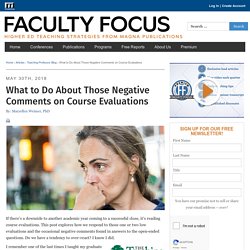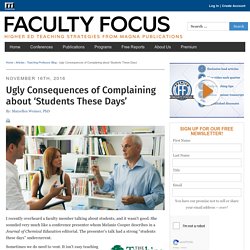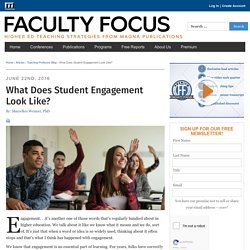

How Can We Amplify Student Learning? The ANSWER from Cognitive Psychology. In the early 2000s, anyone learning about pedagogy might have encountered “learning styles,” a collection of theories that assert people learn differently, coupled with the advice to teach in ways that include visual, auditory, and/or kinesthetic learning.

We know now from rigorous testing in cognitive psychology that learning styles are really learning preferences that do not correlate with achievement (An et al., 2017). It turns out that learning happens similarly in fully-cognitive functioning learners, and it all has to do with brain processes that enable long-term memory. Books about study techniques built around learning science principles have proliferated in recent years (Carey; Sousa; Brown), with some now also tackling the strategies teachers can employ to encourage students to study more effectively (Zakrajsec; Willingham).
While cognitive science literature is exciting, it lacks a unifying structure to enhance practitioners’ recall and application of the findings. What IKEA and Our Education System Have in Common (It’s Not a Good Thing) Ahh, IKEA.

If you are anything like me, you probably have a love/hate relationship with IKEA. I love walking through their store, putting our kids in childcare, and seeing all the possibilities (and cheap prices) of their furniture. What to Do About Those Negative Comments on Course Evaluations. If there’s a downside to another academic year coming to a successful close, it’s reading course evaluations.

This post explores how we respond to those one or two low evaluations and the occasional negative comments found in answers to the open-ended questions. Do we have a tendency to over-react? I know I did. I remember one of the last times I taught my graduate course on college teaching. Five Ways to Promote a More Inclusive Classroom.
The graduation gap continues to exist between traditional and nontraditional students.

Although the classroom experience has not been the focus of most institutions’ retention and persistence efforts, faculty can and do play a major role for improving the retention and success of all students. It’s a topic covered extensively in my new book, Creating the Path to Success in the Classroom: Teaching to Close the Graduation Gap for Minority, First-Generation, and Academically Unprepared Students, released earlier this month. While recognizing that there are no easy answers, I offer ideas that can be incorporated in, or modified to align with, faculty’s existing teaching methods. Following are a few excerpts from chapter two, where I suggest five steps for promoting an inclusive classroom: Is My Teaching Learner-Centered? It’s hard to say—we have no definitive measures of learner-centeredness or even mutually agreed upon definitions.

And yet, when we talk about it, there’s an assumption that we all understand the reference. My friend Linda recently gave me a beautifully illustrated children’s book that contains nothing but questions. Group vs. Collaborative Learning: Knowing the Difference Makes a Difference. Five years ago, I transitioned from a totally lecture-based classroom to a more student-centered, engaging one.

Initially, I found that when students were placed in groups, they didn’t necessarily work together. What I discovered was that the activities needed to be structured collaboratively to promote learning. Examining the Unexamined: Why Do Students Procrastinate? Ugly Consequences of Complaining about 'Students These Days' I recently overheard a faculty member talking about students, and it wasn’t good.

She sounded very much like a conference presenter whom Melanie Cooper describes in a Journal of Chemical Education editorial. Six Ways to Improve Your Department’s Teaching Climate. June 1st, 2016 By: Maryellen Weimer, PhD In the same way a classroom’s climate is created jointly by teacher and student actions, a department’s teaching climate results from collective contributions.

Of course, department chairs and other administrators play key leadership roles, but they alone are not responsible for creating the teaching climate. What Does Student Engagement Look Like? Engagement. . .it’s another one of those words that’s regularly bandied about in higher education.

We talk about it like we know what it means and we do, sort of. It’s just that when a word or idea is so widely used, thinking about it often stops and that’s what I think has happened with engagement. Six Things Faculty Can Do to Promote Student Engagement. Last week’s post encouraged us to reconsider what student engagement means and entails.

Student Engagement Tip: Give Each Lesson its Own Theme Song. The challenge of engaging students in a large, introductory political science course, motivated Christopher Soper [article referenced below] to start exploring whether music might help him better connect students and course content. He now opens every class session with a song, and selecting those songs is part of an extra-credit assignment in the course. The assignment works like this: students recommend songs, given the topics designated for coverage each day in class. They nominate the song and write a short paper explaining why and how the song relates to the topic for the day. Soper reviews the nominations and selects a song, with the student who nominated the song getting a small number of bonus points. For protection on the legal front, Soper asks students not to download the song.
The article contains lots of examples of songs students have nominated and Soper has selected. Soper does admit the strategy has costs.
Don't teach students the hard way first. Imagine you were going to a party in an unfamiliar area, and asked the host for directions to their house. It takes you thirty minutes to get there, on a path that takes you on a long winding road with slow traffic. As the party ends, the host tells you “You can take the highway on your way back, it’ll take you only ten minutes. I just wanted to show you how much easier the highway is.” Wouldn’t you be annoyed? And yet this kind of attitude is strangely common in programming education. I was recently talking to a friend who works with R and whose opinions I greatly respect.
Effective educational videos. Video has become an important part of higher education. It is integrated as part of traditional courses, serves as a cornerstone of many blended courses, and is often the main information delivery mechanism in MOOCs. Several meta-analyses have shown that technology can enhance learning (e.g., Schmid et al., 2014), and multiple studies have shown that video, specifically, can be a highly effective educational tool (e.g., Kay, 2012; Allen and Smith, 2012; Lloyd and Robertson, 2012; Rackaway, 2012; Hsin and Cigas, 2013). In order for video to serve as a productive part of a learning experience, however, it is important for the instructor to consider three elements for video design and implementation: One of the primary considerations when constructing educational materials, including video, is cognitive load.
The nuances that separate good educators from the great educators. Most of us are making our decisions in education based on how we wish the world was working. Here’s a prime example. We take offense when we are sitting at a restaurant or a café and we see a couple paying more attention to their phones, then to each other. In this same way, we are upset when a student enters our classroom looking at his or her smart phone. Check that… mesmerized by the phone screen. Welcome Orientation for International Sessionals at QUT.